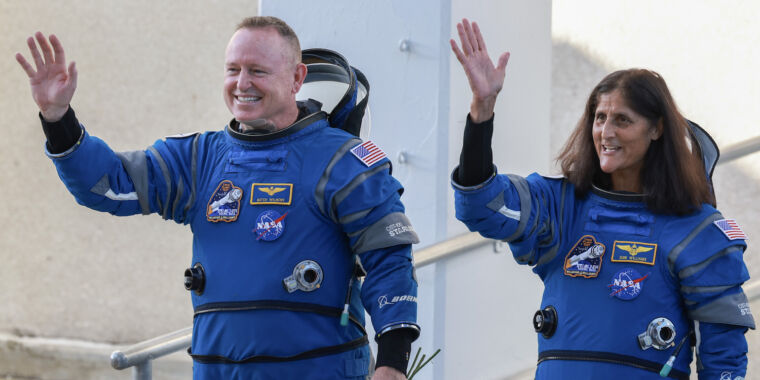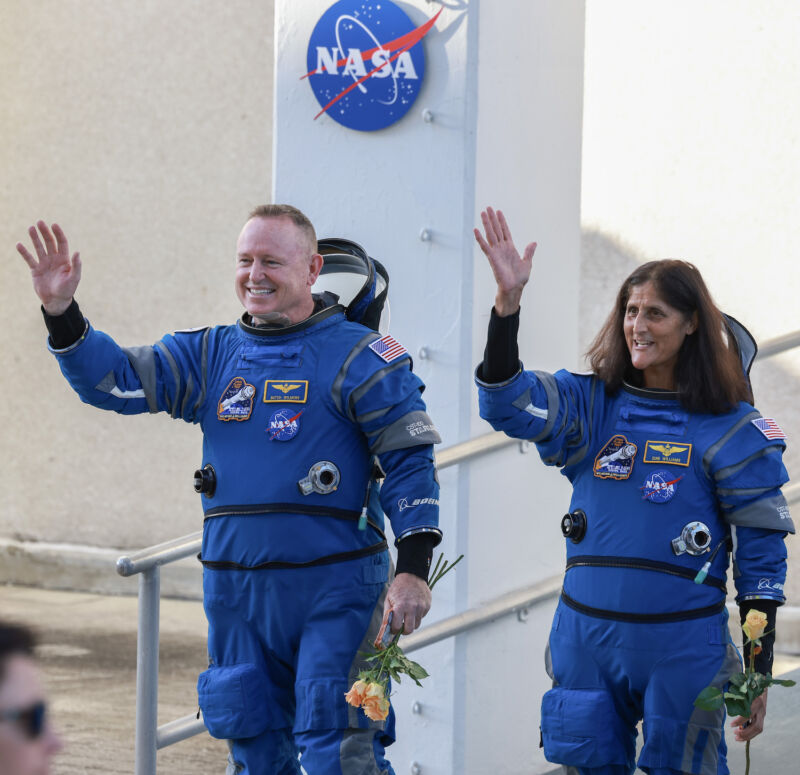

It’s no surprise that NASA astronauts Butch Wilmore and Suni Williams spend time away from their families. Both are retired Navy captains, have served in war zones, and are veterans of their six-month stay on the International Space Station.
When they launched to the space station aboard Boeing’s Starliner on June 5, the astronauts expected to be home in a few weeks, or perhaps a month at most. Their minimum mission was eight days, but NASA was always likely to agree to a short extension. Wilmore and Williams were the first astronauts to fly into orbit aboard Boeing’s Starliner, a feat that came about seven years after Boeing and NASA originally envisioned.
But the test flight didn’t quite hit its mark. Wilmore and Williams are now more than three months into an eight-month mission aboard the station. The Starliner spacecraft has been plagued by problems, culminating in NASA officials deciding last month to return the capsules to Earth without the astronauts. Instead of flying home aboard Starliner, Wilmore and Williams will return to Earth in February aboard SpaceX’s Dragon spacecraft.
Grateful for the choices
The astronauts spoke to reporters on Friday for the first time since NASA decided they would remain in orbit until early 2025.
“It was tough at times,” Wilmore said. “There were tough times along the way. Of course, as a commander or pilot of your spacecraft, you don’t want to see the spacecraft go without you, but that’s what we ended up with.”
Both astronauts are veteran U.S. Navy pilots with previous flights on space shuttles and Russian Soyuz spacecraft. Captains never want to abandon their ships, but that wasn’t the case with Starliner. Instead, their ship left them.
Williams said she and Wilmore watched Starliner’s departure from the space station from the lab’s multi-windowed dome module last week. They remained busy with a variety of tasks, including monitoring the separation process and managing space station systems during the dynamic phase of departure.
“We were watching our spacecraft fly away at that moment,” Williams said. “I think it’s nice to have some extra activity. Of course, we’re very familiar with Starliner, so it was clear what was happening at every moment.”
NASA’s top managers had little confidence in Starliner’s safety after five thrusters temporarily failed during the spacecraft’s approach to the space station in June. They were unwilling to risk the lives of the Starliner’s astronauts when engineers were not convinced that the same thrusters, or more, would perform as required during the return trip home.
It turns out that the Starliner’s suspected thrusters worked after it left the space station and headed back on Sept. 6. One of the thrusters in the Starliner’s crew module — which is different in design from the ones that had previously experienced problems — failed on the return flight. Investigating the problem is something Boeing and NASA engineers will add to their to-do list ahead of the next Starliner flight, along with previous problems with overheating engines and a helium leak.
“It’s a risky business, and things don’t always go the way you want them to,” Wilmore said. “Every test flight, especially the first flight of a spacecraft or an airplane ever, there are problems… 90 percent of our training is preparing for the unexpected, and sometimes the unexpected goes beyond what you thought could happen.”

“Web maven. Infuriatingly humble beer geek. Bacon fanatic. Typical creator. Music expert.”





More Stories
Scientists confirm that monkeys do not have time to write Shakespeare: ScienceAlert
SpaceX launches 23 Starlink satellites from Florida (video and photos)
A new 3D map reveals strange, glowing filaments surrounding the supernova